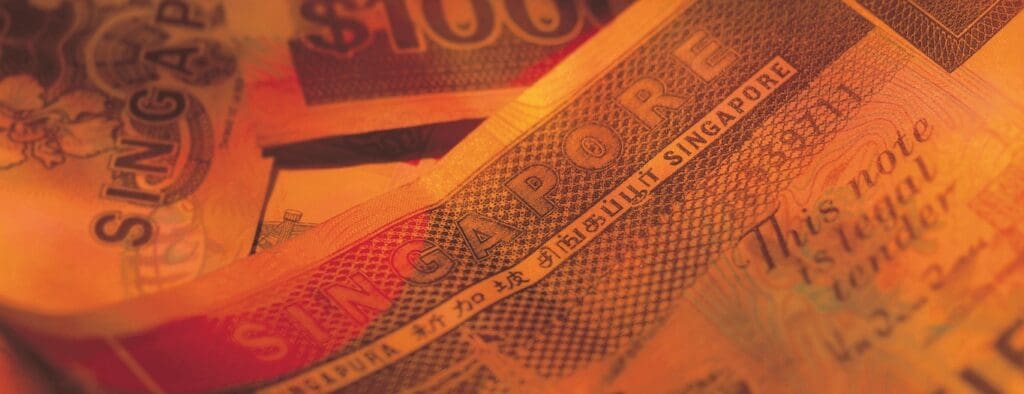Helping fintechs be compliant with the Monetary Authority of Singapore
Our solutions can help you stay up to date with AML regulations that will comply with the Monetary Authority of Singapore.
Get Started
The Monetary Authority of Singapore (MAS) was established in 1970 by act of government, beginning operations as the country’s central bank, and financial regulatory authority, on 1 January 1971. Prior to its introduction, the monetary functions of Singapore’s central bank were performed by separate government departments. As the complexity of modern banking increased, however, and Singapore’s financial profile grew, the inefficiencies of co-ordinating between financial departments became evident – creating a need for coherence and uniformity which only a centralized administrative body could provide. Following the Monetary Authority of Singapore Bill (passed on 2 September 1970) MAS was brought into being. As Singapore’s central bank and financial regulator, it’s vital that financial institutions understand what the Monetary Authority of Singapore is, and how it functions…
MAS’ role on Singapore’s financial landscape is to not only regulate and supervise the financial sector but to promote and sustain economic growth. The Monetary Authority of Singapore is governed by a board of directors and chaired by Singapore’s Minister for Finance. As a government institution, MAS operates by a strict code of conduct and considers certain core values, including a commitment to professionalism, integrity, and fairness, of paramount importance.
In its regulatory capacity, MAS oversees every aspect of monetary policy, banking and finance in Singapore, including matters relating to the insurance industry. According to its mandate, MAS’ role as central bank involves:
The role MAS plays in the economic and professional profile of Singapore is significant. The actions that the Monetary Authority of Singapore takes to regulate and supervise the country’s financial landscape is a foundation of its reputation as an international business hub, and the esteem in which it is held by the international community.
While MAS’ role and responsibilities are broadly similar to the central banks of other countries, there are certain important differences in the way it functions, and the strategies it adopts:
MAS is committed to the implementation of financial technology in its effort to facilitate and promote economic growth. Supporting the Smart Nation initiative, the Monetary Authority of Singapore works to position Singapore as a regional FinTech leader by developing a strong talent pool, building an open architecture economy, reinforcing cyber-security measures, and creating a regulatory environment conducive to innovation.
MAS’ efforts to promote FinTech also involve the launch of its Industry Transformation Map – an effort to create over 3000 jobs in the financial services sector, and a further 1,000 specifically in FinTech.
Unlike other central banks, the Monetary Authority of Singapore is unique in that it exclusively uses the exchange rate (as opposed to interest rates) in order to manage economic growth. MAS’ perspective on this approach is that the strategy works best for the city-state’s small and open economic profile – especially in a climate where the majority of consumer goods are imported. In theory, by driving down the value of its dollar, MAS is able to boost Singapore’s export economy, and in turn, stimulate domestic growth.
Given its exclusive focus on the exchange rate, MAS does not take any action to set Singapore’s interest rate. Instead, MAS lets the interest rate float at a level set by the prevailing global environment. In practice, this is usually determined by US interest rates along with speculation, by investors, over the future value of the Singapore dollar.
Although currency printing is a standard duty of a central bank, for the Monetary Authority of Singapore, the process is particularly important. Since its exchange rate policy is built on the value of Singapore’s currency, MAS works carefully to adjust that value by increasing or decreasing the amount of printed Singapore dollars in circulation. In basic economic terms, the more dollars printed and introduced into circulation, the lower their value.
The mechanism by which MAS alters the value of the Singapore dollar involves a carefully compiled, and undisclosed, ‘basket’ of trading partner currencies. MAS aggregates the exchange rates of these currencies and uses this metric to set the optimal value of the Singapore dollar.
The currency ‘basket’ which MAS uses to set the value of its dollar is kept secret – a measure necessary to prevent the manipulation of international trade
While other central banks may meet at numerous intervals during the year to implement changes to their banking policies, the Monetary Authority of Singapore meets only twice a year – in April and October – to change its exchange rate policy. Given their relative infrequency, these meetings are extremely important dates for Singapore’s business community: organizations will see an immediate impact on the value of their financial assets. MAS releases the minutes from its exchange policy meetings, which are available on its website.
Our solutions can help you stay up to date with AML regulations that will comply with the Monetary Authority of Singapore.
Get StartedOriginally published 10 July 2018, updated 04 May 2022
Disclaimer: This is for general information only. The information presented does not constitute legal advice. ComplyAdvantage accepts no responsibility for any information contained herein and disclaims and excludes any liability in respect of the contents or for action taken based on this information.
Copyright © 2024 IVXS UK Limited (trading as ComplyAdvantage).